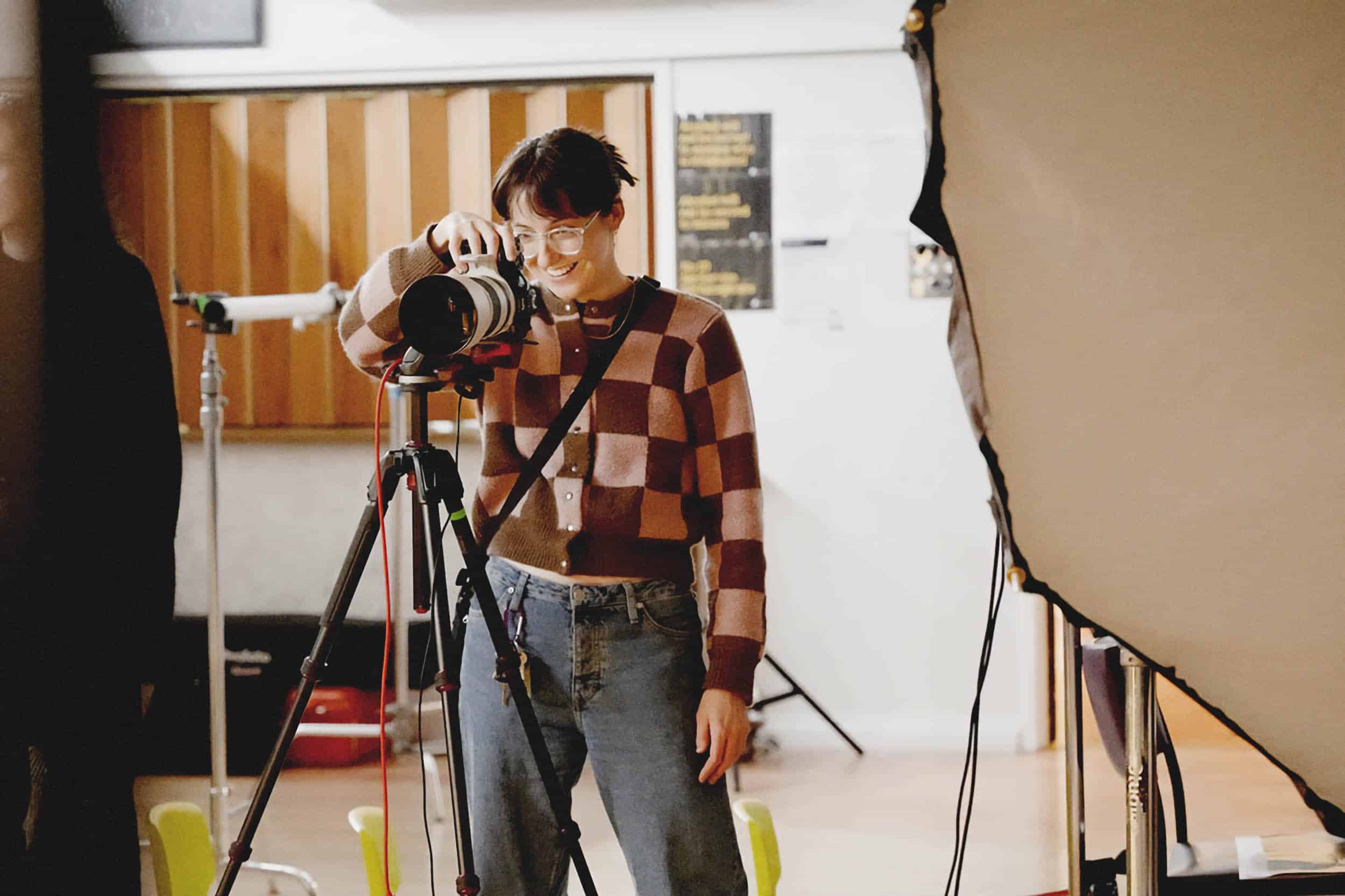You’ve created an illustration series or a photo project. Or maybe you have a killer idea for a personal essay. Now comes the hard part. How do you get your work published?
Technically, pitching your work is as simple as researching which publications would be a good fit, finding the right editor to contact, and sending them an email. But writing an email that stands out in an editor’s overflowing inbox can be difficult. You need to communicate who you are, what you do, and why they should care, all in a well-written and concise message.
No matter who you’re pitching, or what kind of creative work you do, there are some basic guidelines you can follow that will help your pitch stand out from the rest. This is a step-by-step outline on every detail that you should include to make your pitch a good one. We’ve also included invaluable advice from leading editors and creative directors that we’ve previously interviewed here at Format Magazine to give you an inside look at what industry professionals look for in a pitch.
1. Research the publication before you pitch.
Before you get in touch with any editors, think about why your work will be of interest to them. For every publication you’re considering, first ask yourself:
- Have they already covered the topic or theme that I’m pitching?
- If so, how can I offer a different perspective or approach?
- Does my work fit in with this publication’s current style and content?
- If not, is there a way to position my work so that it would be a good fit?
There’s nothing worse than sending out a great pitch that’s identical to something a magazine has recently run. Of course editors don’t expect prospective contributors to read every single story they’ve published, but it’s quick and easy to do a search to check whether or not they’ve featured work that’s very similar to the idea you’re suggesting.
If you find that the publication has already featured a similar story, it doesn’t necessarily mean you should skip pitching there. It depends how unique your idea is. If you’re pitching a photo story about New York hotdog vendors, and the magazine has just run a story on exactly that, you should probably take your work elsewhere. But if you’re pitching a portrait photo series, and the magazine has run a lot of portrait photography, that might mean that your work fits in nicely with their editorial focus.
“If you were trying to pitch stories here—whether it’s National Geographic magazine or Traveler—it’s really, really smart to have looked at the magazines. Know the magazine that you are pitching, and if you have an idea maybe Google and find out: When was the last time we did that and what did it look like? If you’re pitching an idea and we ran it two months ago and you don’t know that, I’m already a little less interested in you because it makes me a little cranky because we just did that.
“Then you should consider, is this the kind of story that’s right for this publication? Is it in our wheelhouse in terms of the topics that we cover? Is it environmental? Is it climate change? Is it cultural? Why should we do this now? Can you answer that question? Why should we do this now and not three years from now?”
2. Personalize every pitch.
Blasting off an identical pitch to thirty different publications might seem efficient, but you’re more likely to get replies if you personalize every pitch that you send. If possible, don’t just send your pitch to the magazine’s generic info email address; find the relevant editor to contact and get in touch with that person specifically. If you can’t find an editor’s name, addressing your email to “Dear [name of magazine] team” helps make your message feel a little more personal.
In addition to personalizing each pitch with the name of the publication and editor you’re contacting, it’s also a good idea to tailor your pitches to fit the different publications to which you’re submitting. If you’re sending the same series to an established photography magazine, an emerging art blog, and a local newspaper, you’ll want to write a different email for each publication. Maybe for the newspaper you’ll emphasize a local focus in your story, whereas for the art blog you’ll add a brief artist statement, and for the photo magazine you’ll mention the photographic technique you utilized to create the work. Make it clear that you’re familiar with the work the publication is doing, and show how your work fits in.
Bloomberg Businessweek creative director Rob Vargas on personalizing pitches:
“I get a lot of emails where they misspell the name of the magazine, but if I get an email from someone who has actually looked at the magazine and gets it, it’s kind of a no-brainer. A lot of the time it’s on the illustrator to not send me something that looks like it belongs in Good Housekeeping. Persistence definitely pays, but people also just have to be mindful of who they’re pitching to.”
3. Introduce your work with a strong subject line.
A clear and informative subject line is often what separates an email that gets replied to from one that gets ignored. The best subject lines aren’t sensational or overly long, but communicate what’s being pitched in a snappy and interesting way. An easy template for a solid subject line is to begin with a phrase that explains the form of your pitch, and follow up with an attention-grabbing line describing its content.
For example, let’s say you’ve shot a photo series exploring the historic architecture of New York’s Coney Island. You might use the subject line, “Photo series: Documenting Coney Island.” For a more effective subject line, though, consider what makes your work intriguing, different, and worth featuring. Maybe your photo project depicts Coney Island in a way that you feel offers a fresh perspective. “Photo series: Documenting an unseen side of Coney Island” sounds a lot more interesting and conveys the uniqueness of your work.
Stay away from subject lines that are overly long or detailed. A complicated subject line is more likely to lead to your email getting skipped over than it is to catch an editor’s attention. Make it instantly clear what you’re offering, whether it’s a photo story, a written feature, or the latest instalment of your web comic.
4. Be friendly and polite.
A casual tone is best for email pitches. While your grammar and spelling should always be correct, and it’s best to avoid abbreviations, slang, and emojis, you don’t need to be overly formal.
That being said, a little courtesy goes a long way when it comes to pitch emails. The editor who’s reading your message has no idea who you are, they’re probably staring at an inbox with hundreds of other similar emails in it, and maybe they’re having a really bad morning. Consider what kind of email would you most want to receive if you were in their place. What sort of messaging would make you think, “I’m excited to read this email” and ultimately “I’d really like to work with this person”?
An email that just says, “Hey, check out my work, here’s my website” is much less appealing than one that starts off with a friendly introduction. In addition to specifically personalizing the email to address the editor you’re contacting, you can also make a positive impression as you sign off by thanking them for their time and consideration, wishing them a good day, and perhaps calling out something positive about the publication.
For example, if a recent feature the magazine published inspired your own work, let the editor know! A genuine compliment about the work they are doing, accompanied by an explanation of why your own work complements it, shows that you’ve taken the time to read the publication and that you understand their ethos.
A pitch email is a great opportunity to make a new professional connection by communicating not just a polite attitude, but also flexibility. Even if you are pitching a specific piece of work, you can also let the editor know that you’re interested in future collaborations and available for commissions. If the publication likes your style and is interested in what you’re doing, but your current pitch just isn’t the right fit, they may contact you in the future.
Refinery29 creative director Piera Gelardi on what makes a pitch stand out to her:
“It’s better to go to fewer interviews, or pitch to fewer people, and make it more focused and do a bit more research to the effect that you can specifically call something out. If you start a pitch to the client or the publication with something that you like, appreciate, or are inspired by—whether it’s a specific thing that they did or just their ethos—that’s going to get someone’s attention more than just saying, ‘Here are all of my accomplishments, and you should hire me.’ It’s better to say, ‘Here’s what resonates with me about what you’re doing, and here’s how I can collaborate with you.’ That’s something I look for.”
5. Introduce yourself.
Begin your pitch by explaining who you are and what you do. Don’t share your entire life story, but include a few relevant details editors might want to know: What kind of work do you do? Are you a student? A full-time freelancer? Where are you based? Where else have you been published?
If you only introduce yourself as “I’m Ann, an illustrator,” you’re asking the recipient of your pitch to do the extra work of figuring out exactly what kind of work you do and who you are. “I’m Ann, a fashion illustrator based in New York City. My editorial illustrations have been featured in publications including Vogue and New York Magazine” instantly gives more credibility and interest to your pitch. Offering some background on your work also makes it more likely that a publication may contact you for other assignments.
Vice photo editor Elizabeth Renstrom on why she looks at the personal side of pitches:
“I encourage people to show me personal projects before they show me what they’ve shot editorially. For me to get a gauge on how I’m going to apply your vision to a story, I need to know what you’re uniquely interested in. That’s when magic pairings happen. “If you show me a personal series you’ve been working on about retired clowns, I’ll be the stalker that remembers you like clowns and hopefully put you on a story about the gathering of the Juggalos or the circus. I will remember what you do if it’s a fresh perspective that I haven’t seen before.”
6. Introduce your work and explain why it’s a good fit.
After introducing who you are what kind of work you do, take a few sentences to introduce what you’re pitching. Keep it short but specific. If the publication doesn’t specify length guidelines for pitches, sticking to more than 500 words is usually a good idea.
If you’re pitching visual work, this description should provide it with context that will further the viewer’s understanding of the work. To some extent, your imagery may speak for itself, especially if you are pitching a creative series rather than photojournalism or documentary work. But no matter the form, you always need to include at least a sentence or two that frames your work.
Pitches that simply introduce the artist and then conclude with a bunch of attached images feel unfinished and leave editors wondering why they should be interested in this project when the artist hasn’t bothered to provide some background on it.
If you’re pitching work you’ve already completed, explain what motivated the project and why you think it would be a good fit for the publication you’re contacting. If you’re pitching an idea for a story, explain what completing the project will entail and when you anticipate it will be done. Offering a timeline is important in helping the editor decide whether or not your story will fit into their calendar. Online magazines often run on a fast schedule, in which pieces can sometimes be squeezed in last minute, and rapid turnarounds are often expected. Print outlets, on the other hand, will often look for story pitches several months in advance of publishing.
Whether you’re sharing personal work or pitching a new concept, your pitch should always answer the questions “Why this?” and “Why now?” What’s fresh and interesting about this idea? How does it fit into the larger ethos of the publication you’re contacting?
If you are reaching out to inquire about the possibility of taking on assignments, for example for freelance writing or editorial illustration, it can still be a good idea to reference and quickly explain a specific project you’ve recently done as an example of your skills. In this case, always make it clear that you’re interested in taking on future assignments and that you’re including a sample to give an idea of the work you do.
Roads & Kingdoms photo editor Pauline Eiferman on why specific pitches are best:
“I think the best type of pitch is a pretty narrow pitch. We need to have good characters and a narrative. Don’t pitch a broad topic, tell us a specific story that will reveal larger issues. A lot of times, we get a pitch and it won’t be exactly right, so the editor goes back and forth and tries to figure out an angle.
“For example, we ran this story that was pitched to us about a guy in India who has a little shack and he sells only egg-based dishes. That’s his thing. So we discussed this, and we were like, ‘Okay, it could be a story that’s very narrow, but how do we make it bigger? How do we make it about this country?’ And what really made it a great article, I think, is that his story reflects something about India, and that’s why it was interesting.”
7. Attach samples of your work.
Ensure that you have checked the submission guidelines for each publication, and attach your work according to their request. Many publications have specific rules for how they want to receive images, and ignoring these rules will likely lead to your pitch getting ignored.
If the publication doesn’t outline how you should send your work, the best practice is to either include links to your work, or attach a couple low-res images to the email. You may consider doing both if you want to make sure editors can get a look at your work right away without needing to click through anywhere. Lead with your best work; attach your most compelling and memorable images to make a strong first impression.
If you have an online portfolio website, attaching links is a fast and easy way to share your work. Include the most important link first, as this is the link that’s most likely to get clicked. Ideally, you should include just one link that showcases the project you’re submitting, if it’s previously been published on your portfolio; or include a link to some of your recent work that’s relevant to the idea you’re pitching.
If you are pitching unpublished work, don’t attach the entire series to the email, and don’t send Dropbox or WeTransfer links unless they’ve been requested by the editor or by the submission guidelines. In your first pitch, you should just include a couple low-res images that give a preview of the work, and explain that you can share the whole high-res project if there’s interest. Including just a few images makes it easy for editors to quickly get a feeling for your work and makes it less likely for your message to get filtered into a spam folder.
BuzzFeed News photo editor Gabriel H. Sanchez on why you should lead with your best work:
“One of the biggest mistakes I see young artists make is sequencing their work poorly. There’s an emotional ebb and flow that can be developed with proper sequencing that can help elevate an artist’s work, even if their projects aren’t narrative-based. With that, I also think it’s a misstep to not place your best work in the number one spot of the sequence.
“When pitching to editors, you really want to blow them away right out of the gate, rather than assume that they’re going to make it to the end of your portfolio.”
8. Include links to your social media accounts and website.
Whether or not you’re attaching images to your pitch email, be sure to always include some links for people to find more of your work. Your email signature is a good place to locate these, or you can sign off with an explainer that more of your work can be found at your portfolio.
If you don’t have an online portfolio, and you’re serious about getting your work published, you should consider creating one. Even if it’s just a quick one-page website that includes a brief overview of your work and a biography, having a personal URL you can include in pitch emails will make people take your work more seriously. An online portfolio also makes it easier for editors to get a feel for who you are what you do beyond a brief email message.
In addition to linking to your online portfolio, feel free to also include links to your professional social media accounts, as long as you keep these regularly updated. This is a good way to add a personal feel to your pitch and another opportunity for editors to get to know you better.
If you don’t have an online portfolio yet, but you really want to get your work out there, linking to some other examples of your published work can help lend a sense of professionalism to your pitch. Unless you have a really significant follower account, and Instagram is a key part of your creative work, a pitch that only includes an Instagram link won’t feel very professional. However, linking to other publications or brands that you’ve worked with will let editors view your work on a more polished platform.
9. Proofread and check your links before sending.
This is clearly one of the most obvious ways to sabotage a pitch, but you might be surprised how often people send out pitch emails with glaring spelling mistakes, typos, and broken links. Be sure to give every pitch a thorough read through before you hit send. Double check the names of publications and editors you are contacting—nobody likes to have their name misspelled. Errors like these may seem minor, but these kind of small mistakes can make an otherwise great pitch come across as sloppy and unprofessional.
Bon Appetit photo editor Emily Eisen on the importance of proofreading:
“Spell peoples’ names right, spell the magazine’s name right. I have had so many emails with Bon Appetit spelled wrong. If you are asking for a job, don’t do that.”
10. Follow up in a professional and timely manner.
If you haven’t received a reply after a few days, this doesn’t always mean you won’t still get one; if your pitch wasn’t timely, the editor may just be busy and might get in touch weeks later. Be sure to check the publication’s policy on unsolicited pitches, if they have shared one on their site. Many magazines get so inundated with emails that they may explicitly state that they won’t reply to you unless your pitch is accepted.
In general, following up on a pitch is not necessary, but if you would like to do so, it’s appropriate to check in after waiting at least one or two weeks. In your follow up message, be brief and polite. Simply ask if the editor has had a chance to take a look at your previous email and leave it at that. It’s always possible that your pitch got buried in an overflowing inbox, or that the recipient did take a look and was interested but has been too busy to follow up.
If you don’t get a reply to your second email, it’s best to assume that the publication isn’t interested in this particular pitch. But just because they didn’t take you up on this idea doesn’t mean they won’t be interested in future ones. Wait a few months and consider reaching out again with new work or a different story suggestion.
In conclusion…
In some ways, getting your work published online is easier than getting it in print. There are a wide variety of small magazines and blogs that accept unsolicited work all the time. If you haven’t been published before, there are many small, lesser-known publications online that might be more likely to check out your work than major publications that get inundated with constant pitches. And if you can get published in a couple smaller blogs, you’re more likely to catch the attention of established magazines.
If you’re ultimately aiming for print publication, focusing on online-only outlets first is a good way to build your portfolio before you start approaching more major places. Finally, don’t forget we’re always accepting pitches for both written and visual work here at Format Magazine. Check out our submission guidelines, and feel free to reach out to us with ideas at magazine@format.com.












